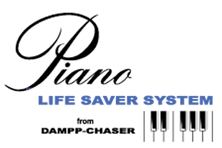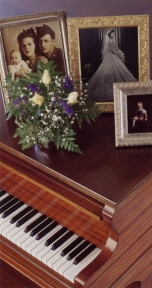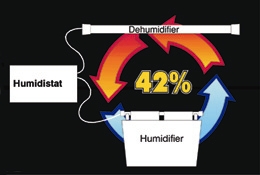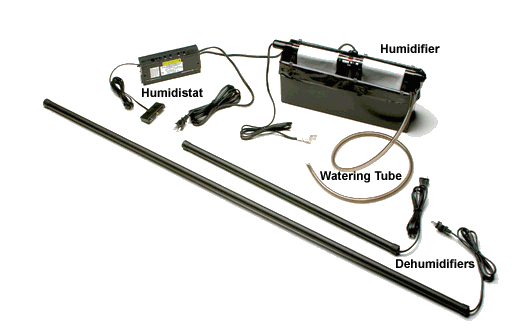Catalogues
| Pianos | |
| Alex. Steinbach Pianos | |
| LifeStyle Pianos | |
| Conover Cable and Samick Pianos | |
| Organs | |
| Roland Atelier Australia | |
| Roland Atelier worldwide | |
| Orla Organs | |
| Digital Pianos and Keyboards | |
| Roland | |
| Accessories | |
| Piano Humidity Control | |
| Pricing | |
| Current Price | |
| Purchase Plans | |
| Rental Plans | |
| Service | |
| Tuning & Repairs | |
| Pre Owned and Specials | |
| Showroom | |
| Contact Us | |
| Web Links | |
 |
|
 |
|
 |
A Piano Life
Saver System from Dampp-Chaser Corp. keeps your piano on pitch
and prevents damage from environmental effects, allowing optimum tonal
quality and keyboard control. Piano technicians and the major piano manufacturers recommend installing the Piano Life Saver System to protect your piano, improve keyboard control, and maintain tuning stability. The System Humidistat keeps humidity levels consistent by activating the piano Dehumidifier during highly humid conditions and when the environment gets too dry, the System Humidifier replaces moisture inside the piano. |
| Protect your piano's investment value by having our piano climate control System installed, out of sight, inside your piano to combat dry and highly humid conditions that can cause costly damage. The System is truly a piano lifesaver and must be installed by a professional piano technician to activate the warranty. | |
| Benefits To Your Piano | |
| Installed out-of-sight inside the piano, the System combats both dry conditions and highly humid conditions, keeping the humidity level in the piano consistent continuously. | |
| The PIANO LIFE SAVER SYSTEM | |
 |
Stabilizes pitch and permits tunings to hold much better and longer (the tuning will not go sharp or flat when the weather or room humidity changes) |
| Minimizes the expansion and contraction of action parts which provides optimum touch and predictable keyboard control | |
| Prevents rust on the strings and metal parts | |
| Minimizes felt deterioration, reducing the harsh tones that come from flattened hammer felt in low humidity or the muffled tones from swollen hammer felt in high humidity | |
| Minimizes glue failure throughout the piano | |
| Protects your piano's investment value year after year | |
| How The System Works | |
| The Piano Life Saver System is made up of basic components which work together to control the humidity levels within your piano, maintaining the recommended relative humidity, no matter what the external conditions are. | |
| Through a cycling action, the Humidistat is calibrated to create a separate environment within the piano, producing a narrow range of average humidity. When the Humidistat, located less than an inch from the soundboard, senses that the wood is dry, it turns the Humidifier on. Then, when the Humidifier has provided enough moisture to the soundboard, the Humidistat turns off the Humidifier and turns on the Dehumidifier. The Dehumidifier carries away moisture from the soundboard on air currents until the Humidistat senses that the soundboard is dry. |
 |
| The System again switches to the humidifying function. The cycle continues day after day, year after year, protecting your piano from external conditions. | |
| Humidity & Your Piano | |
| Limitations of Room Dehumidifiers and Humidifiers | |
| The initial cost of a portable dehumidifier and humidifier is about the same as a Piano Life Saver System installed in your piano. However, if you place value on your time, you will pay much more to keep a dehumidifier and humidifier operating continuously: | |
 |
With the use of a
portable dehumidifier and humidifier, you will need to monitor
the environment daily with a hygrometer to be sure the humidity
remains in a safe range for the piano. The Piano Life Saver
automatically keeps the humidity in a safe range for your piano year
after year. To operate a portable dehumidifier or humidifier continuously requires that you empty (or fill) a large reservoir every day. In contrast, the Piano Life Saver's small humidifier requires only one can of water twice a month in most environments. |
| Portable dehumidifiers and humidifiers are intrusive, noisy appliances while the Piano Life Saver System is hidden inside the piano and works silently | |
| The electricity cost to operate a portable dehumidifier continuously is at least 10 times the cost to operate the Piano Life Saver System continuously. | |
| Keeping the entire room in the safe humidity zone for pianos results in continuous condensation on windows which may rot the wood around the window. Condensation also forms inside the walls surrounding the room and prompts the growth of mold and can cause structural damage to both interior and exterior walls. | |
